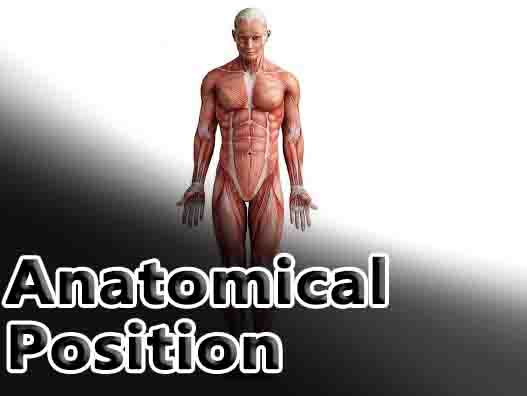Anatomical Position Definition
Standard anatomical position is a way of describing the anatomy of an organism so that it is easy to understand what part of the body is being talked about no matter what direction the organism is facing or where its appendages/limbs are. In humans, standard anatomical position is defined as standing up straight with the body at rest.
Function of Standard Anatomical Position
The purpose of standard anatomical position is to be able to clearly talk about different parts of moving organisms no matter how they are moving or what position they are in. This makes it easier to avoid confusion when discussing anatomy. In humans, standard anatomical position is with the body standing up straight and facing forward, with arms by the sides of the body and palms facing forward.
The legs are straight, and the feet are slightly apart from one another and turned outward slightly. This is used as a starting point for describing the body. In animals that are quadrupedal, or walk on four legs, standard anatomical position is with all four feet on the ground so that the belly of the animal is roughly parallel with the ground.
Relative Locations of the Body
Superior-Inferior
Superior and inferior come from the Latin words meaning “above” and below”. In standard anatomical position, the head is the most superior part of the body, and the feet are the most inferior.
Medial-Lateral
Lateral describes the parts of the body that are toward the sides, while medial describes the middle of the body. If a part of the body is lateral, it can mean left lateral or right lateral. The left and right sides of an organism refer to the left and right sides as viewed by that organism.
In standard anatomical position, a person’s right hand is on the viewer’s left, since they are facing opposite the viewer.
Dorsal-Ventral
The dorsal side is the back side of an organism; think of the dorsal fin of a fish. The ventral side is the belly side of an organism. When a human is in standard anatomical position, the ventral side is facing the viewer.
When a four-legged animal such as a dog is in standard anatomical position, the ventral side is their belly, which is parallel to the ground.
Cranial-Caudal
Cranial refers to being closer to the head, while caudal refers to being closer to the tail. These terms are usually used to describe the anatomy of quadrupedal organisms with tails, and not humans.
The terms rostral and caudal are used when referring to the skull. The area toward the frontal lobes of the brain is rostral, while the area toward where the spine attaches is caudal.
Proximal-Distal
Proximal and distal are used to describe bodily appendages such as limbs. The proximal part of a limb is the part close to where it joins the body, while the distal part is the part furthest away. For example, the tips of our fingers are the most distal part of our arms.
All of these terms are used for relative positions as well as standard anatomical position; for example, the neck is superior to the chest, but inferior to the head. The hands are distal to the arms. The eyes are rostral to the back of the skull.
Planes of the Body
There are three main planes that transect, or divide, the human body into sections to make it easier to describe the locations of body parts and movements. They are the sagittal plane, the coronal plane, and the transverse plane. The sagittal plane runs down the center of the body and divides the body into left and right sides.
The coronal plane divides the body into dorsal and ventral sides. The transverse plane is at the waist and runs parallel to the ground, dividing the body into cranial and caudal sections.
Related Biology Terms
- Anatomy – The branch of biology that studies the structures of organisms’ bodies.
- Anatomical plane – A conceptual plane that is used to divide the body into sections in order to make it easier to discuss anatomy.
- Quadruped – An animal that walks on four legs.
- Caudal – A word used to describe the position of body structures near the tail area of an organism; it is also used to describe the back of the skull.

